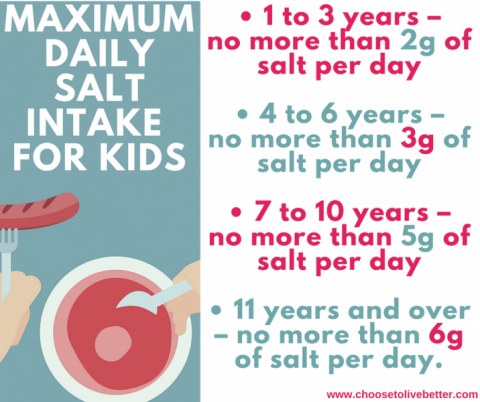Salt Awareness Week – focus on families

Many of us consume more salt than is recommended for good health and it’s not just an issue for adults.
This year as part of Salt Awareness Week (12-18 March), the Public Health Agency (PHA) is drawing attention to the salt that is added to common foods by manufacturers and asking people to think about the amount of salt in the whole family’s diet.
Caroline Bloomfield, Health and Social Wellbeing Improvement Senior Manager, at the PHA, said: “A small amount of salt is an essential part of our diet. However, eating too much can contribute to high blood pressure – also known as hypertension – and increase the risk of stroke and heart disease, which are among the leading causes of disability and death in Northern Ireland.
“Manufacturers’ processed foods can mask high salt levels and this can mean that we eat more salt than we may have intended.
“For example a tin of cream of chicken soup can contain 3 grammes of salt, and a tin of cream of tomato soup can contain 2.2 grammes.
“This may not sound much, but it’s recommended that an adult eats no more than 6g across the whole day – which is only about a teaspoon –, and children a lot less, so you can see how that figure can be reached very quickly.
“It is important that children get the healthiest possible start in life, and part of that is making sure that from an early age young people are informed about the levels of salt in their diet. Parents have an important role in not only taking into account and monitoring the salt in children’s food, but also making children aware of what they are eating so they carry the habit of good nutrition through adolescence and into adulthood.
“When cooking for children, do not add salt to their food and try not to add it at the table. When cooking, consider replacing salt with alternative flavourings such as pepper, lemon juice, herbs and spices.
“It’s also important to read the nutritional information on food packaging. Many food labels will use a colour-coding system to inform you of high salt content (marked in red), medium salt content (marked in amber) or low salt content (marked in green).
“Try to eat foods that have a low or medium salt content and try to avoid high-salt foods. If you are eating high-salt foods, try to reduce this over time and consume them only occasionally and in small amounts.”
On the nutritional information on food packets, look at the amount of salt per 100g:
- More than 1.5g salt per 100g is high in salt (red)
- Between 0.3g and 1.5g is medium (amber)
- 0.3g salt or less per 100g is low salt content (green).
Tips for reducing salt for all the family:
- Try to use fewer processed foods, as these are often high in salt;
- Always check labels and choose the ones that are lower in salt/sodium. Look out for low-salt versions (or low-sodium) of your favourite foods. For example: soups, stock cubes, soy sauce, etc;
- Try to get out of the habit of always adding salt at the table;
- Try cutting down on foods that are high in salt such as crisps and nuts;
- If you feel you need to add salt, try halving what you normally put in;
- When cooking, replace salt with herbs and spices. For example, garlic, cumin, nutmeg, cinnamon, fresh ground pepper, tarragon, oregano, lemon juice or flavoured vinegar;
- Sliced processed meats are higher in salt than meat you have cooked yourself so why not use leftovers when making your child’s packed lunch or other fillings such as tuna, salmon, eggs or hummus. For more ideas on lunches visit: www.enjoyhealthyeating.info
- Go for tinned vegetables and pulses without added salt;
- Rock salt and sea salt contain as much sodium as table salt, so there’s no advantage in using these varieties.
More top tips:
Many food labels list ‘sodium’ rather than salt. To convert this to the amount of grammes of salt, multiply the amount of sodium listed by a factor of 2.5. For example, a food label says a product has 0.6g of sodium. Multiply that by 2.5 to find out that it contains 1.5g of salt.
Adults should eat no more than 2.4g of sodium per day, as this is equal to 6g of salt.
Children should eat less than an adult’s daily recommendation of 6g, but how much differs with age so it’s important to keep an eye on how much salt is already in manufactured foods:
- 1 to 3 years – no more than 2g of salt per day
- 4 to 6 years – no more than 3g of salt per day
- 7 to 10 years – no more than 5g of salt per day
- 11 years and over – no more than 6g of salt per day.
Babies under a year old should have less than 1g of salt a day. If a baby is breastfed, they will get the right amount of minerals, including sodium and chloride, from breast milk. Formula milk contains a similar amount to breast milk.
Ends
